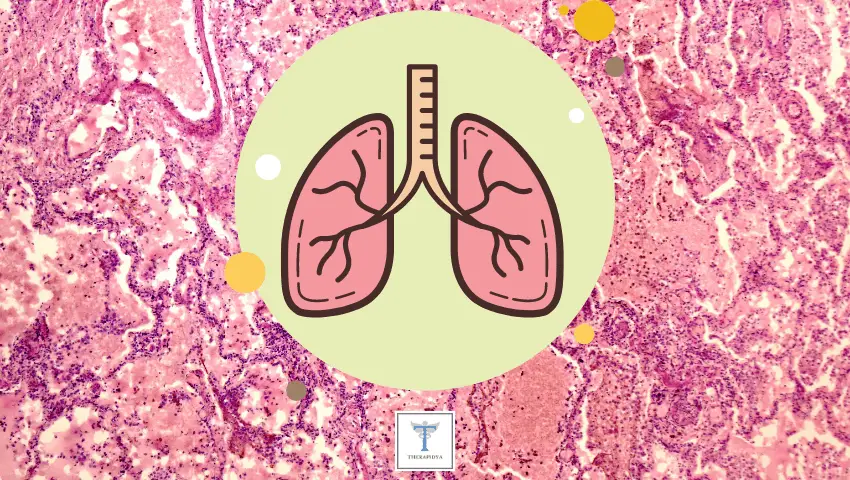Fungal Pneumonia: Important Information for You .. 2023
You’ve probably heard of viral or bacterial pneumonia, but what about fungal pneumonia? Everything you need to know about it is right here.

What Exactly is Pneumonia?
Pneumonia is an inflammation of the lung’s air sacs caused by a viral, bacterial, or fungal infection, which causes them to fill with fluid and pus.
This inflammation causes a variety of symptoms, some of which are minor and others of which may necessitate immediate medical attention.
What are the Different Types of Pneumonia?
Pneumonia is classified based on the site of infection, as follows:
Hospital-acquired pneumonia (HAP): This type of pneumonia occurs as a result of a hospital stay and is one of the most dangerous due to the severity of bacterial resistance to antibiotics.
Community-acquired pneumonia: It occurs in daily life.
Ventilator-associated pneumonia: This type of pneumonia usually develops after using a ventilator.
Aspiration pneumonia: It occurs as a result of inhaling bacteria from food, drink, or saliva due to problems swallowing or during anesthesia.
Also read: Side Effects of Antibiotics: Full Guide 2021
Fungal Pneumonia: Important Information for You
The following article discusses fungal pneumonia, its causes, symptoms, methods of diagnosis and treatment, and other important information:
Fungus Infection of the Lungs
Fungal pneumonia is a fungal infection that affects the air sacs in both or one of the lungs, causing inflammation and filling them with purulent fluid or pus, causing the patient to cough in addition to difficulty breathing, chills, and a variety of other symptoms.
In patients with compromised immune systems or chronic diseases, fungal pneumonia is the most common type of pneumonia.
Fungi that cause pneumonia can be found in a variety of places, including soil and bird droppings, and the sources differ depending on where you live.
Causes of Fungal Pneumonia
Fungal infection can occur as a result of inhaling specific fungal spores or as a result of the reactivation of an existing infection. Fungi that cause fungal pneumonia are classified as follows:
Endemic Fungal Infection
The following fungi are examples of those that can cause this type of infection:
- Histoplasma capsulatum
- Coccidioides immitis (Coccidioides immitis).
- Blastomyces dermatitidis (Blastomycosis pneumonia)
- Brasiliensis Paracoccidioides (Paracoccidioides brasiliensis)
- Sporothrix schenckii
- Cryptococcus neoformans (Cryptococcus neoformans) (Cryptococcus neoformans) (Cryptococcal pneumonia)
This infection typically affects healthy, immunocompromised, or specific individuals in specific geographical areas.
Opportunistic Fungal Infection
The following are examples of opportunistic fungi that can cause fungal pneumonia:
- Candida species are yeasts.
- Species of Aspergillus
- Mucor genus.
- The aforementioned opportunistic fungi are known to cause fungal pneumonia in people who have congenital or acquired immune deficiencies.
Risk Factors for Fungal Lung Infection
Because of the following factors, individuals with resulting immunodeficiency may be more susceptible to infection:
- Organ transplantation
- Chemotherapy for cancer
- The human immunodeficiency virus (HIV)
- Medication for autoimmunity
- The person works in one of the following occupations: a farmer who deals with bird, bat, and rodent droppings on a daily basis, or a gardener who deals with soil on a daily basis

Fungal Pneumonia Symptoms
Signs of fungal pneumonia are similar to those of viral and bacterial pneumonia, which may contribute to the difficulty in diagnosis.
Symptoms include the following:
- Diarrhea
- Fever
- Chills
- Coughing that is accompanied by thick sputum
- Breathing and coughing cause pain.
- Vomiting and nausea
- Difficulty breathing and shortness of breath
The severity of symptoms varies according to the patient’s age and can be classified as follows:
In the elderly, symptoms are usually milder, but in some cases, they can cause mental confusion, necessitating immediate medical attention.
In young children and infants, the infection may be more severe, resulting in pale skin, shortness of breath, and a decrease in urine volume when compared to normal.
Fungal Pneumonia Diagnosis
There are a variety of tests for fungal pneumonia to diagnose the desease, including the following:
- Examination of the body
- X-ray imaging
- Blood test
- Sputum test with pulse oximetry; computed tomography
- Bronchoscopy
Treatment for Fungal Pneumonia
Antifungal medications in appropriate doses for the condition and the type of fungi causing the infection are used to treat fungal pneumonia. Among these medications are the following:
- Itraconazole
- Fluconazole
- Injection of amphotericin B
- Echinocandins

Fungal Pneumonia Survival Rate
The survival rate in fungal pneumonia caused by histoplasmosis is 20%. This rate increased to 75% with drug treatment.
This post is also available in: Dansk (Danish) Nederlands (Dutch) Français (French) Deutsch (German) עברית (Hebrew) Italiano (Italian) Polski (Polish) Română (Romanian) Русский (Russian) Türkçe (Turkish) Español (Spanish) Български (Bulgarian)







